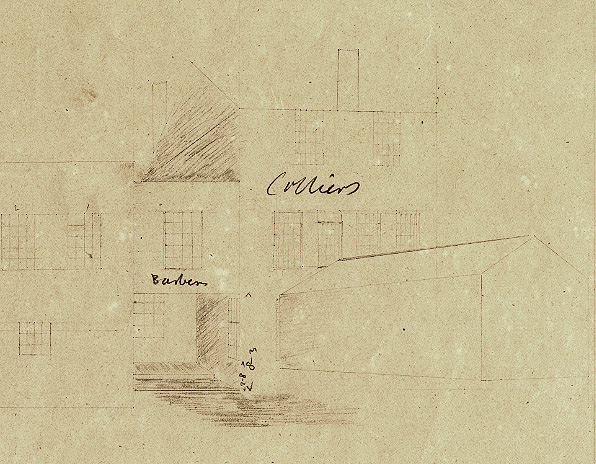

12. Collier v Pierce, Tried 1856: View of the North Side or Rear of the Buildings, Oct. 31st, 1855
In April 1853, the present 42-44 Main Street and the adjacent property were auctioned off by the Concord Mill Dam Company. A.C. Collier, who with his watch and clock repair business was a tenant in the building, purchased it at auction and became the owner. Later that day, Cyrus Pierce purchased the adjacent building and lot. When Pierce put an addition on his building, it was constructed so that it touched Collier’s, blocking a window in Collier’s building. Collier brought a suit against Pierce for obstructing his right to air and light.
Collier, the plaintiff, was represented by George Merrick Brooks, while Pierce, the defendant, was represented by J.G. Abbott and S.A. Brown. The case turned on whether Collier had a legal right to access of air and light by way of the window. Because the properties had previously been owned by the same entity, no easements had been necessary, but once they were sold to separate parties, the circumstances changed. Commentary on the case suggested that if an easement were allowed, it would make one property more valuable than the other. In addition, in a similar case where the right to lights (windows) had been spelled out in the deed, in this it had not. The case was settled for the defendant, Cyrus Pierce. Pierce was the proprietor of a boot and shoe store, a business his son Frank would continue to run well into the twentieth century.
Henry David Thoreau’s 1855 surveys and elevations of these properties provide evidence about Collier’s suit against Pierce. Beyond the information found in the surveys, the elevations and sketches provide a three-dimensional view of the configuration and relationship of the two buildings, and emphasize the location of the windows.